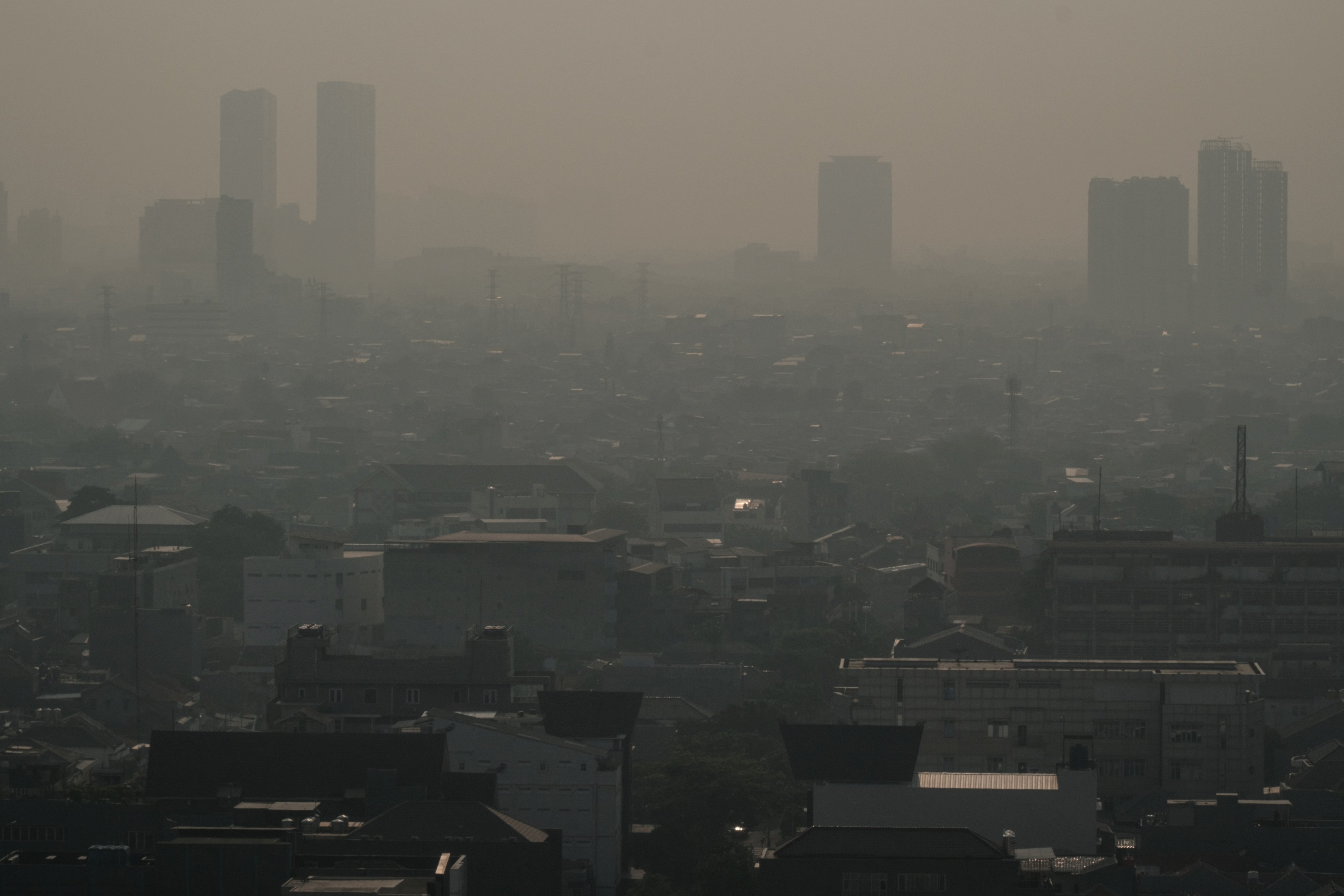Indonesia Targets Air Pollution as President Starts Coughing
Indonesia Targets Air Pollution as President Starts Coughing TIME


Jakarta’s Air Pollution Problem and Efforts to Address It
Jakarta and its surrounding cities are shrouded in thick smog this month, and even Indonesian President Joko Widodo, commonly referred to as Jokowi, appears to be no match for the haze, having dealt with a stubborn cough for four weeks that some say may be caused by the bad air.
“He has never felt like this,” Tourism and Creative Economy Minister Sandiaga Uno told reporters on Monday, adding that the President’s doctor pointed to the poor air quality as a potential contributor to his ailment.
The Impact of Air Pollution in Jakarta
There has long been concern, both at home and abroad, about the city’s smog problem, which, in recent weeks, has been more apparent than ever: Jakarta has been lingering near the top of world pollution rankings since May, and the capital was listed as the world’s most polluted city for several days last week, according to Swiss air quality technology company IQAir.

But whereas the government has shown little urgency in the past to address the air pollution problem, it seems like the President’s cough, coupled with an outpouring of complaints on social media—and an in-person protest Wednesday in front of Jakarta City Hall—about the hazy skyline and the respiratory problems many residents have been feeling, has finally spurred authorities to action.
Government Initiatives to Address Air Pollution
On Monday, in what some have said is the most initiative the government has shown to address the matter, Jokowi held a meeting with ministers to discuss solutions to Jakarta’s air pollution. The group announced a number of measures—including random emission tests for vehicles in Jakarta, and fining or revoking the licenses of drivers who fail the test—though details on when or how the measures would be implemented remained scant. Jokowi also said they were mulling a pollution tax for vehicles and weather manipulation programs to induce rain to clear the haze.
Environmental advocates say that the spate of proposals is a significant development for Indonesia, where authorities have long been touchy about acknowledging the air pollution problem and resistant to calls for action.
Challenges and Slow Progress
When other Southeast Asian states expressed concern about seasonal haze getting blown in from Indonesia in 2015, the then-Vice President said that their neighbors were being ungrateful about the “nice air from Indonesia” they enjoyed at all other times of the year. And earlier this week, the Ministry of Environment and Forestry denied that Jakarta was the most polluted city in the world, saying that the country’s air quality index needs to be compared with other measures.
In 2021, a landmark court ruling sparked optimism from environmental campaigners that authorities would finally set out to tackle Jakarta’s air pollution, after 32 residents living in and around the city won a lawsuit filed in 2019 against Jokowi and six other top-ranking officials. After ruling that authorities were negligent in ensuring citizens’ rights to clean air, the court ordered the national and city governments to tighten Jakarta’s regulations on air quality standards and come up with a plan to minimize air pollution.
Since the legal victory, however, activists say there has been little progress on the court orders. The national government initially responded to the ruling with an appeal, which was rejected last year. And while Jakarta authorities have vowed to implement emission tests on vehicles and come up with an air pollution control strategy, Elisa Sutanudjaja, one of the plaintiffs in the 2019 lawsuit and the executive director of the Rujak Center for Urban Studies in Jakarta, tells TIME that the measures are too little and too slow. Residents are expected to lose 5.5 years of life expectancy, according to the University of Chicago’s Air Quality Life Index, due to the air quality falling short of WHO guidelines.
The Role of Industries in Air Pollution
Authorities have so far mainly focused
SDGs, Targets, and Indicators
1. Which SDGs are addressed or connected to the issues highlighted in the article?
- SDG 3: Good Health and Well-being
- SDG 11: Sustainable Cities and Communities
- SDG 13: Climate Action
- SDG 15: Life on Land
2. What specific targets under those SDGs can be identified based on the article’s content?
- SDG 3.9: By 2030, substantially reduce the number of deaths and illnesses from hazardous chemicals and air, water, and soil pollution and contamination.
- SDG 11.6: By 2030, reduce the adverse per capita environmental impact of cities, including by paying special attention to air quality and municipal and other waste management.
- SDG 13.1: Strengthen resilience and adaptive capacity to climate-related hazards and natural disasters in all countries.
- SDG 15.1: By 2020, ensure the conservation, restoration, and sustainable use of terrestrial and inland freshwater ecosystems and their services, in particular forests, wetlands, mountains, and drylands, in line with obligations under international agreements.
3. Are there any indicators mentioned or implied in the article that can be used to measure progress towards the identified targets?
- Air quality index
- Emission tests for vehicles
- Number of vehicles failing emission tests
- Pollution tax for vehicles
- Weather manipulation programs to induce rain
- Coal consumption
- Emission of air pollutants from coal power plants
- Number of deaths caused by air pollution
- Monitoring of emissions from factories and power plants
SDGs, Targets, and Indicators
| SDGs | Targets | Indicators |
|---|---|---|
| SDG 3: Good Health and Well-being | Target 3.9: By 2030, substantially reduce the number of deaths and illnesses from hazardous chemicals and air, water, and soil pollution and contamination. | – Air quality index – Number of deaths caused by air pollution |
| SDG 11: Sustainable Cities and Communities | Target 11.6: By 2030, reduce the adverse per capita environmental impact of cities, including by paying special attention to air quality and municipal and other waste management. | – Air quality index – Emission tests for vehicles – Number of vehicles failing emission tests |
| SDG 13: Climate Action | Target 13.1: Strengthen resilience and adaptive capacity to climate-related hazards and natural disasters in all countries. | – Weather manipulation programs to induce rain |
| SDG 15: Life on Land | Target 15.1: By 2020, ensure the conservation, restoration, and sustainable use of terrestrial and inland freshwater ecosystems and their services, in particular forests, wetlands, mountains, and drylands, in line with obligations under international agreements. | – Monitoring of emissions from factories and power plants |
Behold! This splendid article springs forth from the wellspring of knowledge, shaped by a wondrous proprietary AI technology that delved into a vast ocean of data, illuminating the path towards the Sustainable Development Goals. Remember that all rights are reserved by SDG Investors LLC, empowering us to champion progress together.
Source: time.com

Join us, as fellow seekers of change, on a transformative journey at https://sdgtalks.ai/welcome, where you can become a member and actively contribute to shaping a brighter future.







